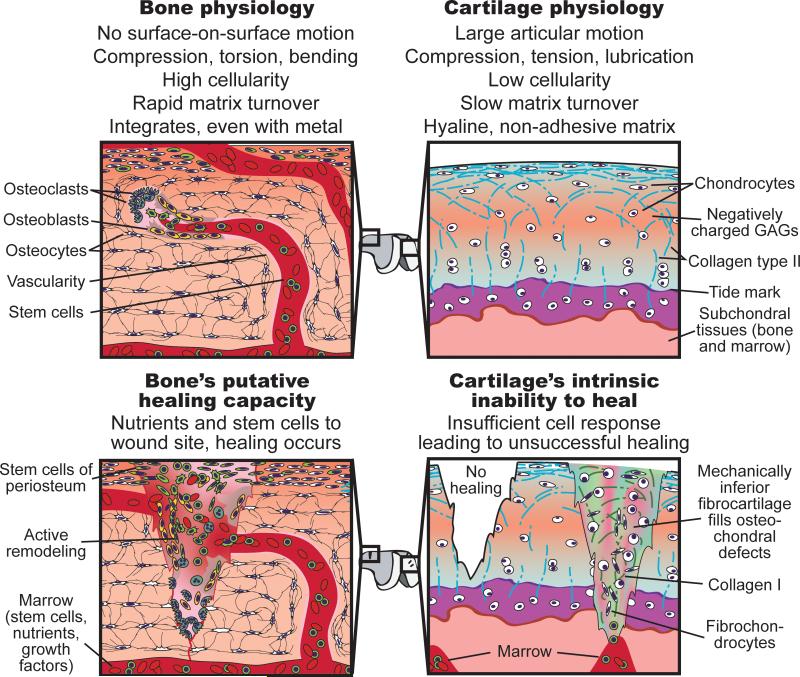Fig. 1.
Differences in the physiologic environment and cellular make-up of bone and cartilage have profound effects on the potential to engineer these tissues. Through the presence of stem cells in marrow and in the periosteum, and access to abundant nutrients via vasculature, bone possesses inherent regenerative capability that can be harnessed in regenerative therapies. Cartilage's hypocellularity and lack of nutrient supply, coupled with the inability of bone marrow MSCs or resident chondroprogenitor cells to generate hyaline ECM, result in a tissue unable to mount a functional healing response. Thus, in contrast to bone's ability to heal, cartilage needs more robust exogenous approaches to achieve satisfactory regeneration.

